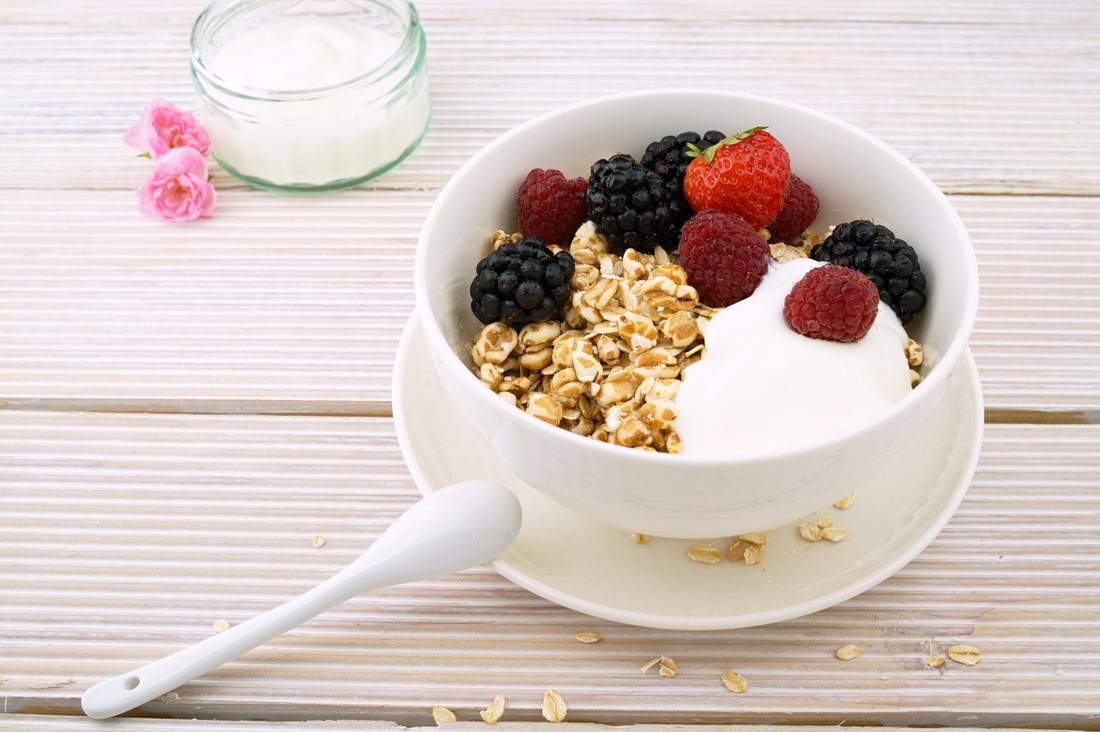|
With the advent of products like Align and Activia, most people are vaguely aware of probiotic supplementation and its benefits to GI health. You may not need to visit the pharmacy or purchase commercially-produced yogurts to get your daily dose, though--naturally-occurring probiotics are actually more common than you might think! Dr. Thor Conner sheds some light on ways to increase your beneficial flora with good food choices. To make it easy to add a variety of these beneficial microorganisms into our diets, here are some probiotic-rich foods that are naturally filled with live, active cultures: Yogurt. My preference is plain, whole fat yogurt (with no added sugar), but any yogurt with a pure, simple ingredient list that includes ‘live, active’ cultures will do. Natural buttermilk. It’s one of those love-it-or-hate-it things, but those of you who love it are in luck. Buttermilk is a good source of probiotics, thanks to the live cultures added to ferment the milk sugars. Cooking with it, however, will destroy the live cultures. Kefir. It’s sort of like a drinkable yogurt, but kefir has different types of probiotics than yogurt. It’s made by fermenting milk with a culture of yeasts and bacteria that are referred to as kefir ‘grains.’ Stick with plain, unflavored kefir to minimize added sugars. Cultured cottage cheese. Nancy’s (Nancysyogurt.com) is a common brand of cultured cottage cheese. It’s different from regular cottage cheese in that it provides live cultures, including L. acidophilus and B. bifidum, as well as four strains of lactic cultures [which are important for colonizing the GI tract, and defending against pathogenic bacteria]. Miso. It’s made by fermenting cooked soybeans with rice or barley, salt, and a starter culture, called Koji, to form a red, white, or dark colored paste. Miso can be used in place of salt in your favorite recipes, as well as in salad dressings, soups, marinades, dips and pesto. For maximum benefit from the live cultures, buy unpasteurized miso paste (located in the refrigerated section) and add to cooked dishes just before removing from heat. Kombucha. It’s made by fermenting yeasts and bacteria with sweetened tea, resulting in a slightly carbonated, probiotic-rich beverage. Look for it in the refrigerated section of grocery stores. Sauerkraut. The fermentation process means that homemade sauerkraut is a good source of live, active cultures. But if it’s store-bought, look for sauerkraut that’s refrigerated and labeled as containing live cultures. Otherwise, it’s likely been heat treated, which destroys the live cultures. Almost any vegetable can be fermented. Kimchi. A Korean staple, kimchi is fermented and pickled cabbage, mixed with other ingredients, such as red pepper flakes, radish, ginger and onion. The freshly made kimchi found at Asian markets and restaurants is rich in probiotics, but, like sauerkraut, kimchi in a jar that has been on the shelf for months has been heat treated, and doesn’t contain live, active cultures. FYI: Avoid any “pickled” product that is made with vinegar [for these purposes]. For more information, visit http://www.wildfermentation.com Submitted by Thor Conner, ND, LMT
Graduate of National University of Health Sciences (IL)
0 Comments
|
ABOUTVis medicatrix naturae, or healing power of nature, is one of six foundational principles of naturopathic medicine. Voice of the Vis Blog provides a platform for integrative health professionals to speak on the healing power of nature, and on other relevant topics of interest. AuthorSContributions to Voice of the Vis Blog are courtesy of naturopathic doctors and naturopathic students attending accredited naturopathic colleges, and other integrative health professionals, including Medical Doctors (MDs), Osteopathic Medical Doctors (DOs), and Chiropractors (DCs). Archives
February 2019
|


 RSS Feed
RSS Feed
